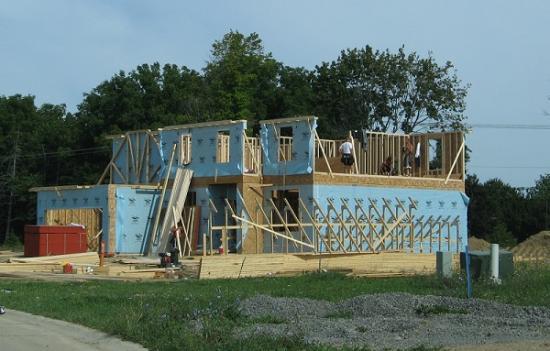New House Prices Are Rising Rapidly Despite A Flat Market - We Need To Diversify What We Build And Who Builds It
29th March 2024

In the latest figures on UK house prices, new builds are particularly eye-catching. The price for such homes has increased by 17% in the past year, while the average price for existing homes cooled by 2.4%.
Prices for England
While these figures may grab attention for a day or two, there is little awareness of the long-term trend, particularly for new builds produced by the nation's biggest housebuilders.
For ten years we have been tracking the performance and finances of the UK's largest housebuilders. We know that around the time of the global financial crisis in 2008, the price of new builds from the biggest firms broadly tracked the average UK house price.
Since then, nearly all have increased their prices above the wider market, meaning these homes sell for roughly 8% more than the average house price.
Over the past couple of decades, there have been been fundamental changes in how the major housebuilders operate. In our recent report, The Invisible Hand That Keeps On Taking, we showed that in 2005 these firms paid out 16% of pre-tax profits as dividends, amounting to just over £5,000 per home built. In 2022 their dividends were 47% of profits or £22,000 per home.
This has happened as the ownership of these organisations has slowly changed over time, with global asset and investment managers becoming their major shareholders.
Large housebuilders have been able to pay historically unprecedented levels of dividends through a combination of increasing house prices and keeping certain costs down (for instance on land). Evidence suggests some builders have actually been reducing their land costs over time.
A few weeks ago, the UK government's Competition and Markets Authority (CMA) published a major report into the housebuilding industry. It concluded that the under-delivery of new homes relates to the planning system creating uncertainties and delays, and also the UK's speculative housebuilding model. On that model, the CMA stated:
The evidence shows that private developers produce houses at a rate at which they can be sold without needing to reduce their prices, rather than diversifying the types and numbers of homes they build to meet the needs of different communities (for example providing more affordable housing).
This strongly suggests that to deliver the homes we need, we must diversify the housing types that are built, and this will involve changing who builds. Boosting development by housing associations and other providers of affordable homes, alongside that of self-builders and community-led housing groups, is one of the few routes available to increase the provision of the homes that are actually needed.
For instance, custom and self-build housing accounts for only 7% of new-build homes in the UK, compared to over 50% in Germany. This market can be developed by making best use of existing legislation, which requires local authorities to provide enough planning permissions to meet demand for self-build homes.
The CMA notes that such forms of non-speculative housebuilding may result in "a lower return on investment which could feed through to lower build prices". If we are to address the affordability of new housing, we will likely need these forms of development.
Housebuilders' profits
The CMA is certainly alighting on an important issue here. However, we would also argue that it has failed to grasp the changes in how the major housebuilders operate, which directly affects what they build and how much it costs.
The CMA's report found that the builders' profits were above ‘normal' for most of the 2010s, but crucially concluded this is just a feature of the cyclical nature of housebuilding.
And yet its own analysis suggests that for 12 of the last 20 years, returns were greater than a "normal" rate of profit. As cycles go, that's very favourable, and we think it reflects a step change in value extraction from the firms in question.
We estimate that over £16 billion was returned to shareholders in the eight largest firms between 2005 and 2022. This represents a major missed opportunity to reinvest in building more homes, and to address other issues that the CMA highlights, including a lack of innovation, issues with the quality of many new homes and the slow adoption of measures to reduce carbon emissions.
Given the significant changes in the price of new-build housing, we should try to understand the real dynamics behind it. If the UK wants to deliver more homes that are affordable to people on modest incomes, then it needs to diversify what is built and, crucially, who builds it.
Authors
Tom Archer
Senior Research Fellow, the Centre for Regional Economic and Social Research, Sheffield Hallam University
Ian Cole
Emeritus Professor of Housing Studies, Sheffield Hallam University
Note
This article is from The Conversation web site. To read it with links to more information go HERE
